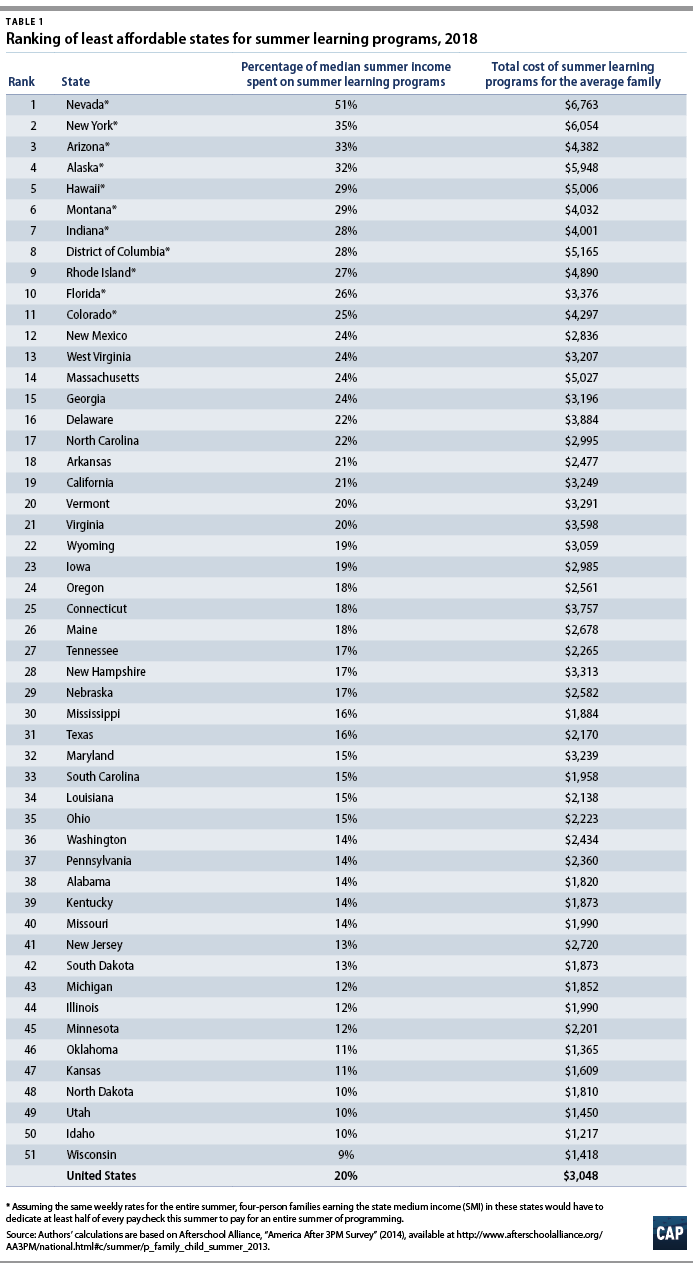Washington, D.C. — Today, the Center for American Progress released a new 50-state analysis looking at families’ ability to afford summer child care by calculating and juxtaposing the median income for a typical family of four and the expected cost of summer programming for 2018. The analysis assumes that the typical family in 2018 will, on average, enroll children in summer programs for five weeks—the average number of weeks children in the United States were enrolled in 2014. However, the national average length of summer vacation is 10 weeks. Key findings from the analysis include:
- The typical family currently spends 20 percent of the income they’ll earn this summer ($3,048) for just five weeks of summer programming.
- In 10 states and the District of Columbia, the typical family would have to dedicate more than half of their paycheck to cover the cost of care for the entire summer season. In the state of Nevada, the cost of child care for the entire summer exceeds 100 percent of the typical family’s summer income—essentially making the cost of summer care impossible for Nevada families to afford.
- Families in 28 states and the District of Columbia would have to spend more than one-third of their income to cover the cost of learning programs for the entire summer.
- States facing the greatest summer care affordability crisis have disproportionately high Latinx populations.

“The high cost of summer child care is stressing families’ finances and hampering children’s ability to thrive academically,” said Cristina Novoa, policy analyst at the Center for American Progress and author of the column. “Our kids are losing essential math and reading skills during the summer months. As families face down higher costs for gas, housing, and health care under the Trump Administration, the high costs of summer child care force difficult tradeoffs between necessities. Congress should make clear that summer learning opportunities should be affordable for all families—not just the wealthy—by passing the Child Care for Working Families Act to help working families afford these payments.”
Click here for a link to the full analysis. For more information or to speak with the author of the analysis, please contact Colin Seeberger at [email protected].